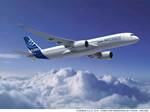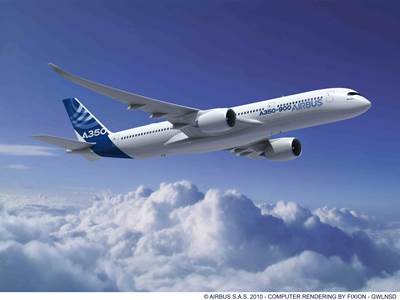The need for quality control in adhesively bonded structural composite repairs has stimulated much debate, particularly about a key question: Will bonded repairs be certified for A350 and 787 primary composite fuselage structures? The actual status of this issue has been clouded since writer Bill Burchell discussed it in “The Future of Composite Repairs” (Overhaul & Maintenance, July/August 2010). A quote from Justin Hale, then the chief mechanic for the 787, gave the impression that the Federal Aviation Admin. (FAA, Washington, D.C.) approves of large bonded repairs to composite primary structures, but the European Aviation Safety Agency (EASA, Köln, Germany) does not. Hale asserted, “The long-held view that we have to continue with bolted repairs because the integrity of a bonded repair cannot be validated is slowly changing. This is no longer a concern for the U.S. FAA, but a conservative view of bonded repairs still exists within EASA.” Hale then contended that “this variance between regulators may ultimately drive a difference between what Boeing and Airbus can offer in repair capability.”
EASA expressly refuted this assertion in a correction it sent to Aviation Week, under whose banner Overhaul & Maintenance is published and promoted. However, Aviation Week declined to print it:
Regarding the concern described in the Aviation Week article, EASA states that no disagreement exists between EASA and FAA regarding the use of bonded repairs. The common position is identified for bonded structure, which includes repairs, in the recently released EASA/FAA/TCCA harmonised documents, i.e., EASA AMC 20-29, FAA AC 20-107B. These reflect, and formalise, common practice, and have been discussed in more detail, and have been presented many times, in shared regulator/industry workshops, and related activities, during recent years.
This common position clearly identifies, within the scope of Fatigue and Damage Tolerance philosophy, that bonded repairs may be acceptable if sized to maintain Limit Load, or better, should the repair fail. Such failed repairs, which represent a damage condition, must be detected within the appropriately substantiated inspection programme used to support the Fatigue and Damage Tolerance philosophy. This design philosophy safely recognises the limitations of current bonding technology.’
Hale’s statement that the integrity of bonded repairs is no longer a concern for the FAA seems at odds with the organization’s first four research priorities, as listed by Dr. Larry Ilcewicz, the FAA’s national resource specialist for advanced composite materials, in his 2010 presentation “Future R&D Requirements for Structural Integrity – Composites”: damage tolerance of composite structures; structural integrity of adhesive joints; composite maintenance practices; and environmental and aging effects for composite structures. The FAA’s priority for research into the structural integrity of adhesive joints, of which bonded repairs are simply one type, and also into composite maintenance practices would seem to indicate a significant degree of concern about bonded structural repairs.
Supporting research outlined in the FAA presentation includes blunt-impact studies to fuselage structures from ground vehicles. Led by Dr. Hyonny Kim at the University of California at San Diego, this study aims to define key variables and worst-case scenarios — “i.e., most severe internal damage with least exterior visually detectable indications” — and goes beyond a size of damage where bonded repair is practical, possibly including several broken frames, stringers and large skin damage. The findings will be used to identify maintenance needs and to improve FAA safety awareness education for aircraft maintenance and ground crews. This type of research, along with detailed R&D technical goals, such as “Consider repairs performed on pressurized shell structure to ensure structural integrity,” seem to indicate that Ilcewicz and the other 21 members of the FAA composites team well understand and are pursuing the complex and critical issues facing the industry as 787 and A350 fleets begin to enter service.
In the same presentation, Ilcewicz states that FAA industry partnerships have been essential, and he stresses the importance of EASA’s efforts to help achieve international standardization, such as the annual Composite Damage Tolerance and Maintenance Workshops; release of the FAA Advisory Circular AC 20-107, which is harmonized with EASA’s AMC 20-29; and significant joint development of Composite Materials Handbook 17 (CMH-17, previously MIL-HDBK 17), specifically the joint EASA/FAA/Airbus/Boeing working group to update sections on composite damage tolerance and maintenance.














.jpg;maxWidth=300;quality=90)









